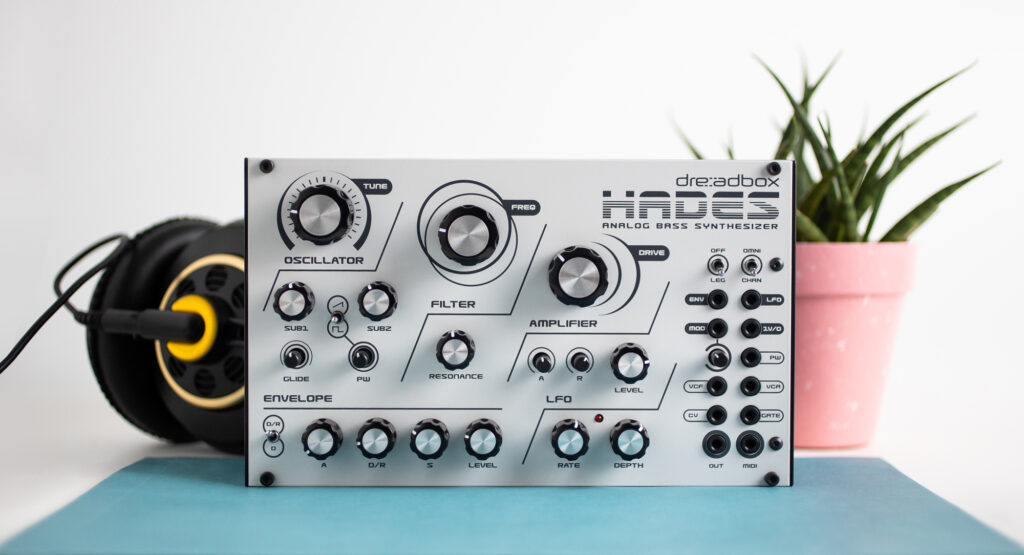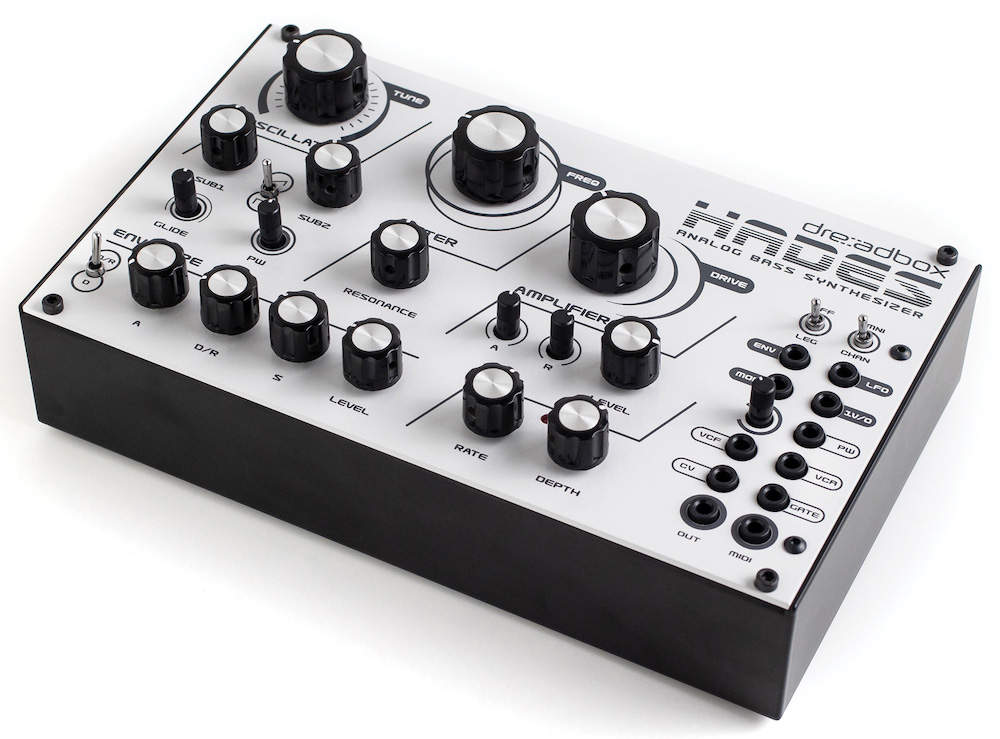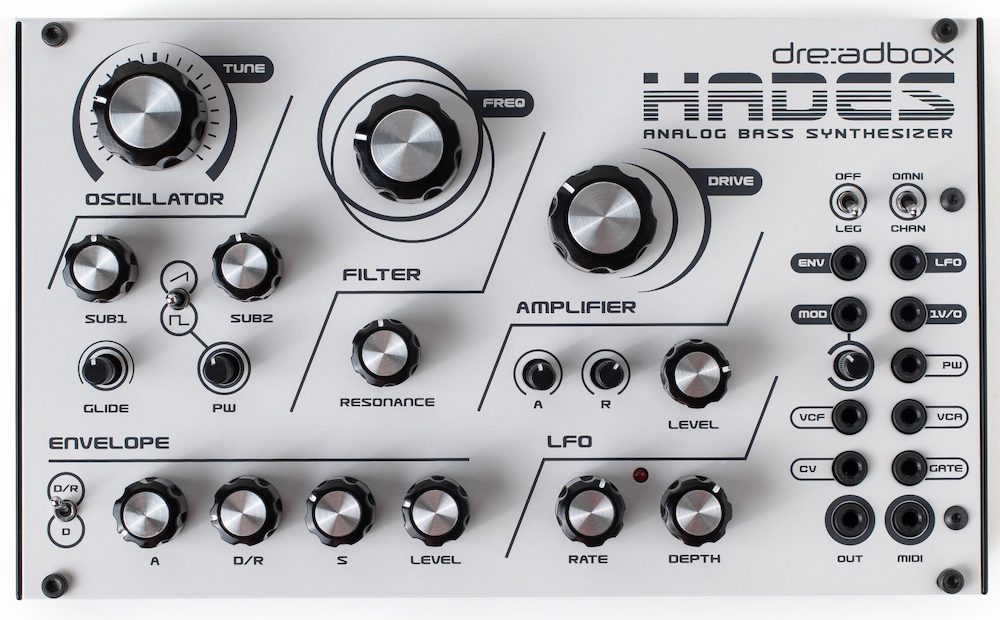King of the underworld? Maybe not, but Dreadbox’s bass synth certainly packs a low-down punch. Greg Scarth explains why this reissue might be the perfect route into analogue synths.

Dreadbox like to do things differently. From roots in fairly old-school analogue synthesis, the Athenian brand have branched out into a quietly excellent range of effects pedals and a variety of synths including the Nymphes, dedicated to abused and oppressed women (with charity donations to back up the words of support). 2023 sees the reissue of two classics from the brand’s back catalogue, the Dreadbox Hades analogue bass synth seen here and the Erebus analogue synth (you can read our Erebus review here).
The Hades is billed as a bass synth first and foremost, although it’s capable of more than just bass, as we’ll come to explain. It’s a monophonic design, the classic and arguably purest approach to analogue synthesis in which the instrument can only play one note at a time, just like the legendary Minimoog and countless other vintage icons. As a synth module without a keyboard or sequencer, you’ll need a way to play the Hades, but the provision of analogue CV/gate inputs and MIDI over a 5-pin DIN adaptor means that you can play or program it with most MIDI keyboards and sequencers, Eurorack or other hardware CV controllers, as well as from your DAW or mobile device via a suitable MIDI interface.

With the Hades hooked up, the signal flow is easy to understand. A single voltage-controlled oscillator (VCO) feeds into a resonant low-pass voltage-controlled filter (VCF). The output of the filter can be driven hard into the voltage-controlled amplifier (VCA) to add distortion, then the overall shape of the sound is controlled by a simple envelope generator with control of attack and release times. A slightly more complex envelope generator can be switched between ADSR and ADS modes in order to modulate filter cutoff frequency, while a low-frequency oscillator provides the final modulation source, not routed internally but patchable to other destinations, more of which later.

It’s a setup which might sound daunting to beginners and maybe a little simplistic to experienced synthesists, but the Hades follows a classic formula. Character and power are the focus here, and the Hades delivers on every level, offering ground-shaking sub-bass courtesy of the two sub-oscillators coming from the VCO, zingy filtering from the 18db/octave OTA-based VCA circuit, and gnarly grit via the overdrive circuit leading into the VCA. The Hades feels like it should appeal most to relative newcomers to analogue synthesis, but it’s got enough to appeal to those who know their way around a hardware synth, particularly when you explore the semi-modular patching options. The small bank of patch points on the right-hand side of the module offer access to key signals from the synth circuitry, allowing you to sculpt the signal flow to your own preference. Patching proves that the Hades is not necessarily just for bass, especially when you hook it up to other Eurorack-compatible modules. In fact, the Hades would be a very good starting point for a Eurorack modular setup; use it on its own to begin with, then unscrew it from its case and rack it alongside some other oscillators, filters and any modules you like, expanding it into a full-on modular rig.
In many ways, the Hades conjures up the spirits of classic analogue synths like the Micromoog or even the semi-modular Korg MS-10, simple and affordable instruments in their day but ones which packed a huge sonic punch. It’s a good reminder that the old-fashioned analogue synth formula still works. Whatever your favourite genre, it’s a tried and tested approach to making music, with no patch memory, no presets and no on-board effects. It’s how almost all electronic music – disco, synthpop and so on – was made up until the mid 1980s and how the vast majority of underground dance tracks – house, techno, jungle – were made deep into the 90s. The Hades makes you work a bit to get where you need to be. There’s a simplicity here which it would be easy to dismiss as being a little basic, but the sound proves anything but.

At just under £350, the Hades might just be the biggest bargain in the Dreadbox product range. It’s a fat, weighty synth with a rich, distinctive sound and just enough features to keep things interesting without overwhelming newcomers to analogue synthesis. It’s quite unusual to reissue an instrument so soon after its original release, but the Hades (and the Erebus) prove that sometimes it’s worth revisiting the past.
Greg Scarth
More info/buy